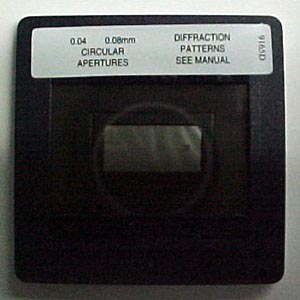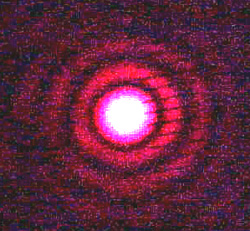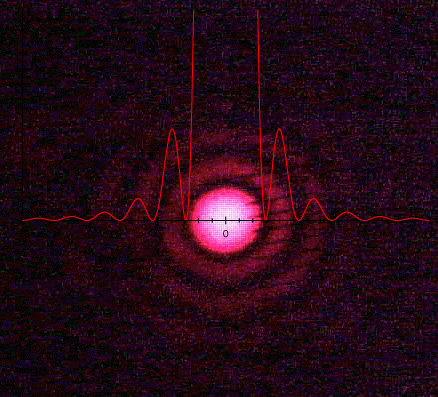Overview:
Light incident on a circular aperture produces a diffraction pattern described by (ignoring an overall scale factor):
where J1 is a Bessel function and alpha is given by:
where y is the position on the screen measured with respect to the central maximum, L is the distance from the aperture to the screen, and a is the aperture radius.
Goal of this Experiment: The goal of this experiment is to measure the position of the bright and dark annuli of the diffraction pattern produced by a circular aperture. A schematic of the set-up is shown below.

The PASCO system has a slide (9165D) with two circular apertures with diameters of 0.04mm and 0.08mm.

Suggested Procedures:
Sample Data:

This photograph of a circular diffraction pattern had its brightness
and contrast adjusted in NIH Image to make the bright and dark annuli
clearer. The diameters of the annuli were measured (in pixels) using
the Marquee Tool and the Info Window in NIH Image. A millimeter scale
is visible on the right side of the image which was used to determine
the corresponding physical size the annuli. In the plot below, the
bright and dark regions of the pattern are plotted (appearing as red
and gray rectangles). A Bessel function, described by:
which was constrained to match only the center of the first dark ring, is plotted as well.

The Bessel function was also superposed on the photo - keeping the scale true:

Questions: